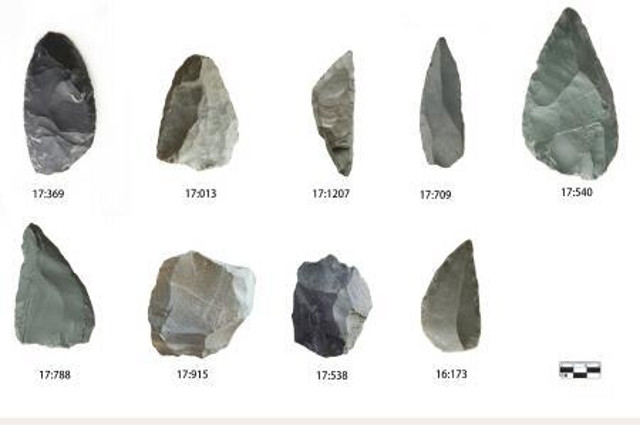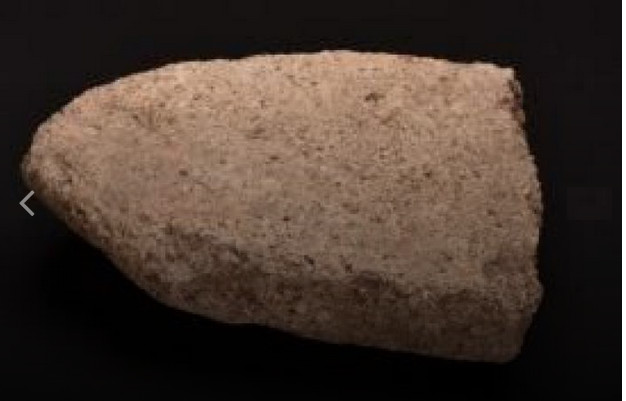Discovered animal bones, stone tools 45,000 years old in ancient Chinese caves
Archaeologists have recovered thousands of artifacts from a cave in Xinjiang (an autonomous region in northern China) including stone tools, bronze and iron fossils and animal fossils. According to the Archaeological Institute of the Chinese Academy of Social Sciences, some may be of the Paleolithic period, meaning they are about 45,000 years old.

Specifically, about 2,000 artifacts were excavated at the ancient site of the Tongtiandong cave excavation (not to be confused with Tongtianlong limosus, the bird-like rain dinosaur in 2016, when archaeologists discovered what's left of an ancient dinosaur stuck in mud). According to the Chinese Academy of Social Sciences, the Tongtiandong is a Paleolithic cave that was first recorded in Xinjiang.
About a third of the artifacts are stone tools, of which one-third are fossil animal skeletons. Animal bone fossils that researchers can identify from the remains of fossils include rabbits, sheep, donkeys, rhinos, bears and birds. In addition, they found many tools like labor tools used for cutting, burning and other operations.

The excavation was done through a partnership between the Beijing University Institute of Archeology and the Peking University Academy and the Xinjiang Autonomous Academy and Archeology in Xinjiang.
Archaeologists conducted preliminary excavations in early 2016 before returning in 2017 to take more careful and detailed notes. Recent findings have been published in Chinese Archaeological Research and translated into English for the Chinese Academy of Social Sciences.
According to previous research, this cave revealed stone tools and other archeological artifacts that showed the activity of people 10,000 years ago, according to the Chinese News Service's English website. reported.
The archaeological relics in this cave are significant in the Early Iron Age, the Bronze Age, the Chalcolithic Era and finally the Paleolithic period. These findings can help us better understand how people have existed and developed for tens of thousands of years in this region.
According to the Chinese Academy of Social Sciences, the researchers even obtained the remaining wheat grains that they found to be between 5,000 and 3,500 years old. They argue that the area is one of the earliest wheat growing areas, and it could be the starting point for which grains spread through other regions and regions through trade.
See more:
- China: Archaeologists discover the lost temple after 1000 years
- China's oldest royal palace was discovered in Shanxi
- Found 400-year-old Chinese ceramic shipment in Mexico
You should read it
- The 7,500-year-old rock drill is found in the prehistoric village of Turkey's Bursa
- Archeology: Excavating 13 ancient tombs in Tibet
- Set of three Buddha statues in gold coins found in Yangyang
- The console of the Iron Man armor is inspired by the early iPhone
- Mysterious mysteries of 2000-year-old caves on the precipice of 50m high in Nepal
- Many 4,500-year-old tools are found in Khurda, Odisha
 The 7,000-year-old architecture is found in western Iran
The 7,000-year-old architecture is found in western Iran 530 million year old fossils have eyes like bees, dragonflies today
530 million year old fossils have eyes like bees, dragonflies today The 1,600-year Roman tomb with ancient coins was discovered in Somerset
The 1,600-year Roman tomb with ancient coins was discovered in Somerset Pre-Hispanic Temple of Wari civilization is found in Peru
Pre-Hispanic Temple of Wari civilization is found in Peru Ancient burial tombs contain strange artifacts discovered in Izmir, Turkey
Ancient burial tombs contain strange artifacts discovered in Izmir, Turkey Archaeologists unexpectedly discovered Byzantine Monastery
Archaeologists unexpectedly discovered Byzantine Monastery